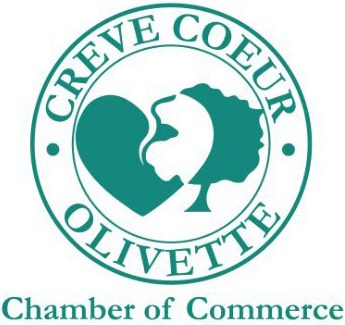Jump to a Specific Section
The Story Behind Today’s Limited Liability Company Structure
The Limited Liability Company, or LLC, has become one of the most popular business structures in the United States today. Its appeal lies in its simplicity, flexibility, and the legal protections it offers to business owners. But what exactly is an LLC, and how did it come to be the go-to choice for many entrepreneurs? To fully appreciate the benefits of an LLC, it’s helpful to understand the historical context in which this business structure emerged and evolved.
The Pre-LLC Era: Sole Proprietorships and Partnerships
Before the LLC was introduced, business owners had limited options when it came to structuring their enterprises. The two most common forms were sole proprietorships and partnerships.
Sole Proprietorships
A sole proprietorship is the simplest form of business organization. In this setup, a single individual owns and operates the business. There is no legal distinction between the owner and the business, meaning the owner is personally responsible for all debts and liabilities. This can be risky because personal assets, like a home or savings, could be used to settle business debts.
Partnerships
A partnership involves two or more people sharing ownership of a business. There are several types of partnerships, but in a general partnership, each partner is equally responsible for the business’s debts and obligations. Like sole proprietors, partners in a general partnership face unlimited liability. This means personal assets are at risk if the business cannot pay its debts.
The Corporate Option
For those seeking limited liability protection, forming a corporation was the primary alternative. Corporations, such as C corporations and S corporations, offer liability protection to their owners (shareholders). This means that shareholders are not personally liable for the corporation’s debts. However, corporations come with their own set of challenges, including complex regulatory requirements, double taxation (in the case of C corporations), and rigid operational structures.
The Birth of the LLC
The concept of the LLC was born out of a need for a business structure that combined the liability protection of a corporation with the operational flexibility and tax advantages of a sole proprietorship or partnership. The LLC structure was first introduced in the United States in Wyoming in 1977.
Wyoming’s legislature enacted the first LLC statute, largely influenced by similar business structures in other countries, particularly the German GmbH (Gesellschaft mit beschränkter Haftung).

The Spread and Evolution of LLCs
Following Wyoming’s lead, other states began to adopt LLC statutes. Florida was the second state to pass LLC legislation in 1982. However, it wasn’t until the Internal Revenue Service (IRS) issued Revenue Ruling 88-76 in 1988 that LLCs gained significant traction. This ruling allowed LLCs to be treated as partnerships for federal tax purposes, provided they met certain criteria, thus avoiding double taxation.
By the mid-1990s, all 50 states had enacted LLC legislation, and the LLC became a widely recognized and utilized business structure across the country.
Key Features and Benefits of an LLC
Limited Liability Protection
One of the primary benefits of an LLC is limited liability protection. This means that the personal assets of the LLC’s owners (referred to as members) are generally protected from the company’s debts and liabilities. If the business faces legal action or bankruptcy, members’ personal assets are not at risk, unlike in sole proprietorships and general partnerships.

Tax Flexibility
LLCs offer significant tax advantages. By default, a single-member LLC is treated as a “disregarded entity” for tax purposes, meaning it is taxed like a sole proprietorship. Multi-member LLCs are treated as partnerships. In both cases, the LLC itself does not pay federal income taxes. Instead, profits and losses are passed through to the members, who report them on their personal tax returns using IRS Form 1040.
Additionally, LLCs have the option to be taxed as a corporation if it benefits the business. By filing IRS Form 8832, an LLC can elect to be taxed as a C corporation, or it can file IRS Form 2553 to be taxed as an S corporation. This flexibility allows business owners to choose the tax treatment that best suits their needs.
Simplified Management and Operations
LLCs are relatively easy to form and maintain compared to corporations. There are fewer ongoing formalities, such as mandatory board meetings and extensive record-keeping requirements. An LLC can be managed by its members (member-managed) or by appointed managers (manager-managed), offering flexibility in how the business is run.
Fewer Compliance Requirements
Unlike corporations, which are subject to stringent regulatory requirements, LLCs face fewer compliance burdens. This makes it easier and less costly to operate an LLC. For example, there is no need to issue stock, hold annual shareholder meetings, or keep detailed minutes of meetings.
Adaptability to Various Business Needs
The LLC structure is highly adaptable and can be used for a wide range of businesses, from small, single-owner operations to large enterprises. This versatility makes the LLC an attractive option for many different types of businesses.
The Steps Required to Form an LLC
Forming an LLC involves several key steps:
- Choose a Business Name: The name must be unique and comply with the state’s naming rules, often including a designation like “LLC” or “Limited Liability Company.”
- File Articles of Organization: This document, sometimes called a Certificate of Formation, is filed with the state’s business filing office (usually the Secretary of State). It includes basic information about the LLC, such as its name, address, and the names of its members.
- Create an Operating Agreement: Although not always legally required, an operating agreement outlines the LLC’s ownership structure, management, and operating procedures. It helps prevent disputes and ensures smooth operation.
- Obtain Necessary Permits and Licenses: Depending on the type of business and location, various permits and licenses may be required to operate legally.
- Register for Taxes: An LLC needs to obtain an Employer Identification Number (EIN) from the IRS by filing Form SS-4. This number is used for tax reporting and to hire employees.
The Modern LLC: A Perfect Balance
Today, the LLC is a popular choice for entrepreneurs due to its combination of liability protection, tax advantages, and operational flexibility. It offers a perfect balance between the simplicity of sole proprietorships and partnerships and the legal protections of corporations. Whether you’re starting a small business, looking to protect your personal assets, or seeking a flexible and tax-efficient business structure, the LLC stands out as an excellent option.
In conclusion, the LLC has revolutionized how business is conducted by offering a flexible, efficient, and protective structure for business owners. Its rise from a novel idea in Wyoming to a staple of American business is a testament to its enduring benefits and adaptability. As the business landscape continues to evolve, the LLC will undoubtedly remain a cornerstone of entrepreneurial success.















